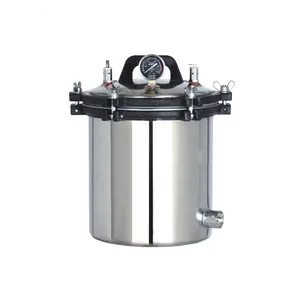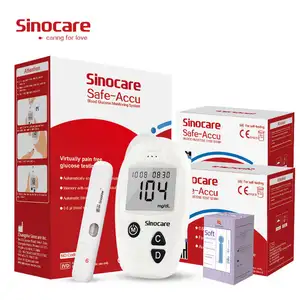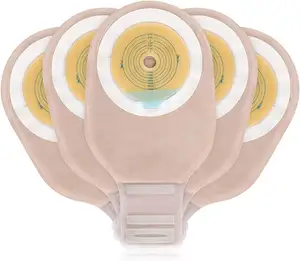Popular in your industry







































































Related Searches:







































































































































Top categories
About usb ultrasound probe
The advent of USB ultrasound probes has revolutionized the medical imaging landscape, offering unprecedented portability and convenience in diagnostic technology. From the early post-war innovations to today's cutting-edge devices, ultrasound technology has undergone a remarkable evolution. Now, with the integration of USB connectivity, these probes have become a game-changer in medical diagnostics, providing high-quality imaging in a compact, versatile form. This article delves into the transformative impact of USB ultrasound probes, exploring their development, diverse applications, and the key considerations when choosing the right probe on platforms like Alibaba.com.
The Evolution of Ultrasound Technology
The use of ultrasound technology in medicine has a rich history, tracing back to the post-World War II era. Pioneering efforts laid the groundwork for the development of practical ultrasound technology. Over time, advancements in electronics and materials led to significant improvements in ultrasound imaging, transitioning from bistable to greyscale images, and evolving from still images to real-time moving pictures. The fusion of Doppler ultrasound with imaging technology marked a further leap in medical diagnostics, enhancing the ability to investigate blood circulation and organ blood supply.
Technological strides continued with the introduction of the microchip, which brought about exponential increases in processing power. This enabled the creation of faster and more sophisticated systems that incorporated digital beamforming and advanced signal enhancement. Innovations such as power Doppler and 3D imaging have since emerged, offering new ways to interpret and display ultrasound data. These developments have paved the way for the modern USB ultrasound probes, which are celebrated for their portability and advanced imaging capabilities.
Understanding USB Ultrasound Probes
Ultrasound technology has advanced to a stage where it is now accessible in handheld, portable forms without compromising on the clarity of imaging. USB ultrasound probes exemplify this advancement, offering a convenient and flexible diagnostic tool. These devices connect directly to a computer or laptop via a USB port, transforming the system into an ultrasound scanner. This innovation has made ultrasound technology more accessible in various settings, from medical facilities to remote outreach programs.
The practicality of USB ultrasound systems is evident in their ease of use and the ability to provide immediate imaging results. For instance, medical professionals have utilized these probes for vascular access procedures with efficiency. The portability of the USB ultrasound system is particularly beneficial in areas with limited medical infrastructure, enabling healthcare providers to perform essential diagnostics, such as confirming fetal health and pregnancy details, in the patient's own environment.
Feedback from users highlights the effectiveness of these probes in a range of scenarios, from detecting unexpected medical conditions to routine obstetrical examinations. The simplicity of the design and the quality of the images produced allow for a wide range of applications, demonstrating the versatility of USB ultrasound probes. Their cost-effectiveness also makes them a viable option for various healthcare settings, ensuring that essential diagnostic capabilities are more widely available.
Types of USB Ultrasound Probes Available on Alibaba.com
The Alibaba platform showcases a diverse range of USB ultrasound probes, catering to various diagnostic requirements. Among the offerings, one can find the versatile 3-in-1 probes, which combine linear, convex, and phased array functionalities into a single device, enhancing portability and convenience. These probes are designed to connect seamlessly via USB and WIFI, making them suitable for use with a variety of devices, including smartphones, laptops, and tablets, across different operating systems such as iOS, Android, and Windows.
Particularly noteworthy are the wireless mini color Doppler ultrasound probes, which offer the dual-head feature for comprehensive scanning capabilities. The compact design of these probes does not compromise on the quality of the scanning image, with some models boasting up to 192 elements for superior image clarity. For professionals on the move, the pocket-sized ultrasound probes provide a practical solution for physical examinations, with the ability to connect through both USB and Wifi.
In addition to general-purpose probes, specialized options like the phased array transducer ultrasound probe cater to more targeted applications, such as cardiac imaging. The product range also includes probes with specific compatibility to renowned ultrasound systems, ensuring that users can find a probe that matches their existing equipment. With the emphasis on convenience and functionality, these USB ultrasound probes represent a significant advancement in portable medical imaging technology.
Applications in Various Industries
The integration of USB ultrasound probe technology with portable computing devices has led to the development of a versatile medical imaging solution. This innovation has broadened the applications of ultrasound technology beyond traditional clinical settings. USB ultrasound probes are now being utilized for a variety of medical examinations, including obstetric evaluations of the uterus, and assessments of internal organs such as the kidneys, liver, bladder, eyes, and prostate.
Furthermore, these probes are instrumental in vascular imaging, aiding in the insertion of intravenous lines and central catheters by providing clear images of veins and arteries. The portability and ease of use of these devices make them suitable for multiple industries, including emergency medicine, primary care, and sports medicine, where quick and reliable imaging is crucial. The technology's adaptability also extends to remote medical services, where it can play a significant role in bringing diagnostic capabilities to underserved areas, thus expanding the reach of healthcare services.
Key Features and Innovations
The diagnostic ultrasound market is witnessing a surge in technological advancements, particularly with the introduction of handheld, point-of-care ultrasound solutions. These innovations are designed to enhance hemodynamic assessment and measurement capabilities across a variety of diagnostic applications. The handheld devices facilitate blood flow quantification in cardiology, abdominal, vascular, obstetrics, urology, and gynaecology applications.
Recent developments in ultrasound technology have also seen the launch of high-end systems optimized for use in bustling hospital environments. These systems come equipped with features like S-Shearwave Imaging to provide insights into tissue stiffness, which can be indicative of disease. This represents a significant step forward in noninvasive diagnostic techniques.
Moreover, the industry has introduced cart-based ultrasound systems aimed at improving diagnostic accuracy while reducing unnecessary biopsies and lesion correlation time. These systems are notable for their multi-touch trackpads, which streamline the diagnostic process and improve efficiency, while still delivering superior image quality and advanced imaging modes.
The integration of ultrasound systems with other diagnostic technologies such as CT, AI, PACS, MRI, X-ray, and endoscopy is also a key feature of the latest ultrasound machines. This integration offers comprehensive diagnostic solutions that are becoming increasingly economical, thereby positioning ultrasound equipment as a cost-effective alternative to more expensive imaging modalities.
Material and Design Considerations
The material and design of ultrasound transducers, including USB ultrasound probes, are critical to their function and performance. Central to these probes is the piezoelectric crystal, which is responsible for generating and receiving ultrasound waves. The arrangement of these crystals affects the footprint and shape of the ultrasound beam, which in turn influences the image quality and depth of penetration. For instance, linear transducers have a linear crystal arrangement, leading to a rectangular beam shape and good near-field resolution, while convex transducers feature a curvilinear arrangement, producing a convex beam shape suitable for in-depth examinations.
The frequency of the ultrasound waves emitted by the probe is another crucial design consideration. Higher frequencies provide better image resolution but have a shallower penetration depth, making them ideal for superficial examinations. Conversely, lower frequencies penetrate deeper but offer lower resolution. USB ultrasound probes on platforms like Alibaba's marketplace come in various shapes and sizes, tailored for specific applications across different parts of the body, from external to internal examinations.
In addition to the piezoelectric crystals and frequency considerations, the footprint of the probe—its contact area with the body—is also a significant design element. It varies among different types of probes, such as linear, convex, and phased array, each suited for particular diagnostic purposes. The design of USB ultrasound probes is thus a balance between material properties, crystal arrangement, footprint, and frequency to meet the diverse needs of portable imaging applications.
Advantages of Portable Imaging with USB Ultrasound Probes
Portable ultrasound machines offer a range of advantages that align with the growing demand for accessible and efficient medical imaging. These devices facilitate immediate and precise diagnoses directly at the patient's location, which is crucial in various medical settings, especially when dealing with critical care patients who cannot be easily transported.
The portability of these ultrasounds significantly improves patient throughput as they can be moved from room to room, avoiding the need for patients to wait for access to a stationary machine. This mobility also allows for the possibility of multiple devices in different rooms, reducing wait times and increasing the number of patients that can be attended to.
Cost-effectiveness is another key advantage. Portable ultrasounds are less expensive than their full-sized counterparts, making it feasible for smaller clinics or individual practitioners to own and operate multiple units. This affordability also extends to large facilities, which can equip various departments with these devices, thereby streamlining the process of patient care.
In emergency settings, the use of portable ultrasounds is invaluable, providing safe, non-invasive, and radiation-free imaging to patients who are in critical condition. The engagement between patient and doctor is enhanced as real-time imaging can be shared and discussed on the spot, leading to better understanding and cooperation in the treatment process.
Lastly, the technological advancements in portable ultrasound machines mean they come with a variety of features and options, including advanced imaging capabilities and ease of operation, without compromising on the quality of imaging. This makes them a versatile tool in the arsenal of medical imaging equipment.
How to Choose the Right USB Ultrasound Probe on Alibaba.com
When selecting the right USB ultrasound probe on Alibaba.com, consider the type of probe that suits your specific needs. Options range from multi-functional probes that offer linear, convex, and phased array capabilities to those designed for specific sectors such as veterinary use. Look for features such as wireless connectivity, compatibility with multiple devices, and whether the probe supports both WIFI and USB connections for versatility.
The material and build of the probe are also crucial for durability and performance. Probes with robust construction materials that can withstand regular use in various environments are preferable. Additionally, consider the design aspects that can affect portability and ease of use, such as the size and weight of the probe.
Assess the imaging capabilities, like the presence of color Doppler functions, which are essential for detailed diagnostics. The number of elements in a probe can provide higher resolution images. Lastly, ensure that the device meets the necessary certification standards, such as CE, to guarantee a level of quality and safety in its use.
Conclusion
In summary, USB ultrasound probes represent a significant leap forward in medical imaging, combining portability with high-quality diagnostic capabilities. From their historical evolution to the latest innovations, these devices have expanded the reach of ultrasound technology to a variety of settings, including remote and underserved areas. Alibaba.com offers an extensive selection of these probes, catering to a wide range of medical needs and making advanced imaging more accessible than ever. When selecting a probe, considerations such as type, connectivity, build quality, imaging capabilities, and certification standards are paramount. Ultimately, the integration of USB ultrasound probes into medical practice underscores a broader trend towards more accessible, efficient, and patient-centered healthcare.












































